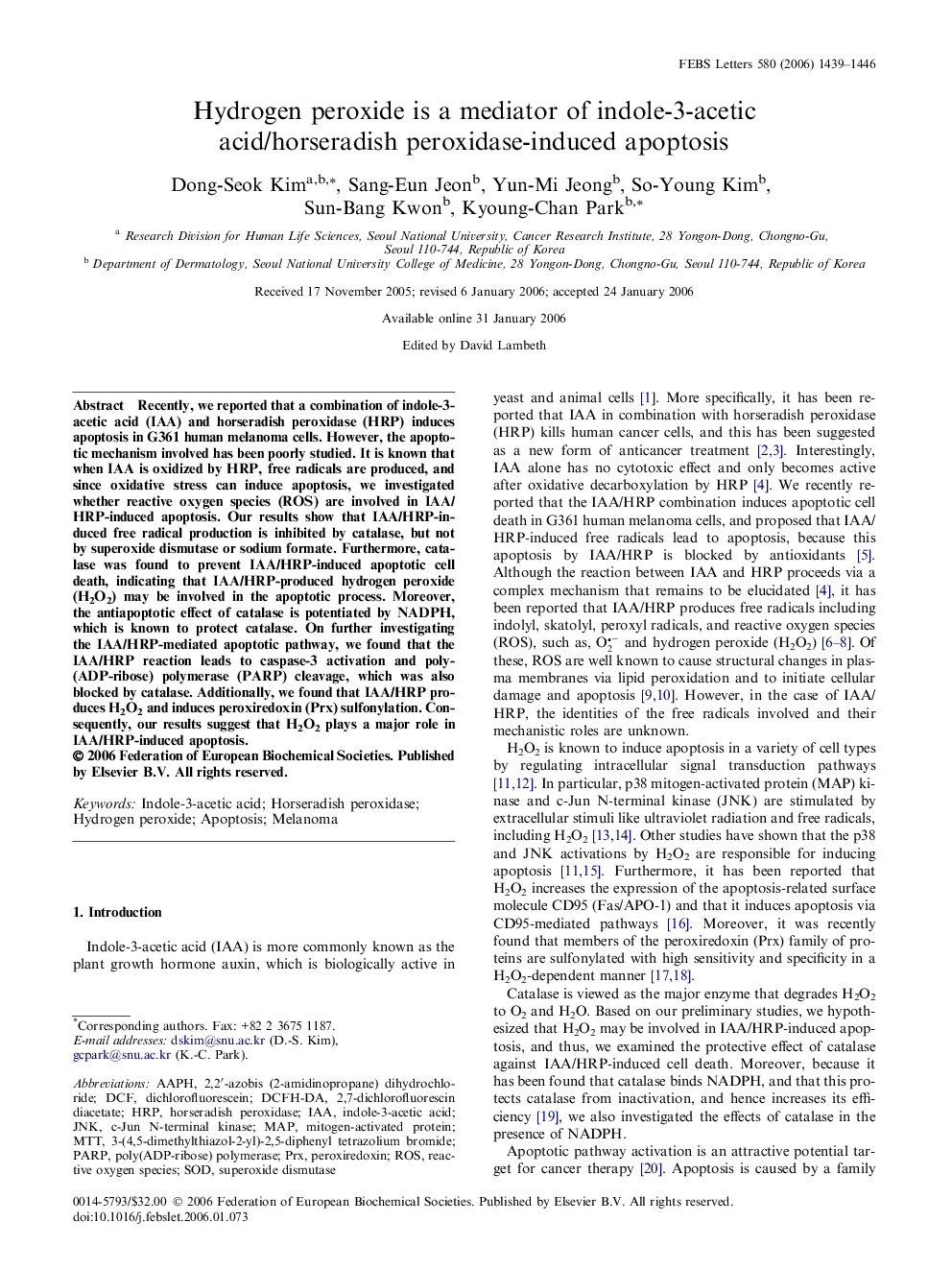| Article ID | Journal | Published Year | Pages | File Type |
|---|---|---|---|---|
| 2051665 | FEBS Letters | 2006 | 8 Pages |
Recently, we reported that a combination of indole-3-acetic acid (IAA) and horseradish peroxidase (HRP) induces apoptosis in G361 human melanoma cells. However, the apoptotic mechanism involved has been poorly studied. It is known that when IAA is oxidized by HRP, free radicals are produced, and since oxidative stress can induce apoptosis, we investigated whether reactive oxygen species (ROS) are involved in IAA/HRP-induced apoptosis. Our results show that IAA/HRP-induced free radical production is inhibited by catalase, but not by superoxide dismutase or sodium formate. Furthermore, catalase was found to prevent IAA/HRP-induced apoptotic cell death, indicating that IAA/HRP-produced hydrogen peroxide (H2O2) may be involved in the apoptotic process. Moreover, the antiapoptotic effect of catalase is potentiated by NADPH, which is known to protect catalase. On further investigating the IAA/HRP-mediated apoptotic pathway, we found that the IAA/HRP reaction leads to caspase-3 activation and poly(ADP-ribose) polymerase (PARP) cleavage, which was also blocked by catalase. Additionally, we found that IAA/HRP produces H2O2 and induces peroxiredoxin (Prx) sulfonylation. Consequently, our results suggest that H2O2 plays a major role in IAA/HRP-induced apoptosis.
